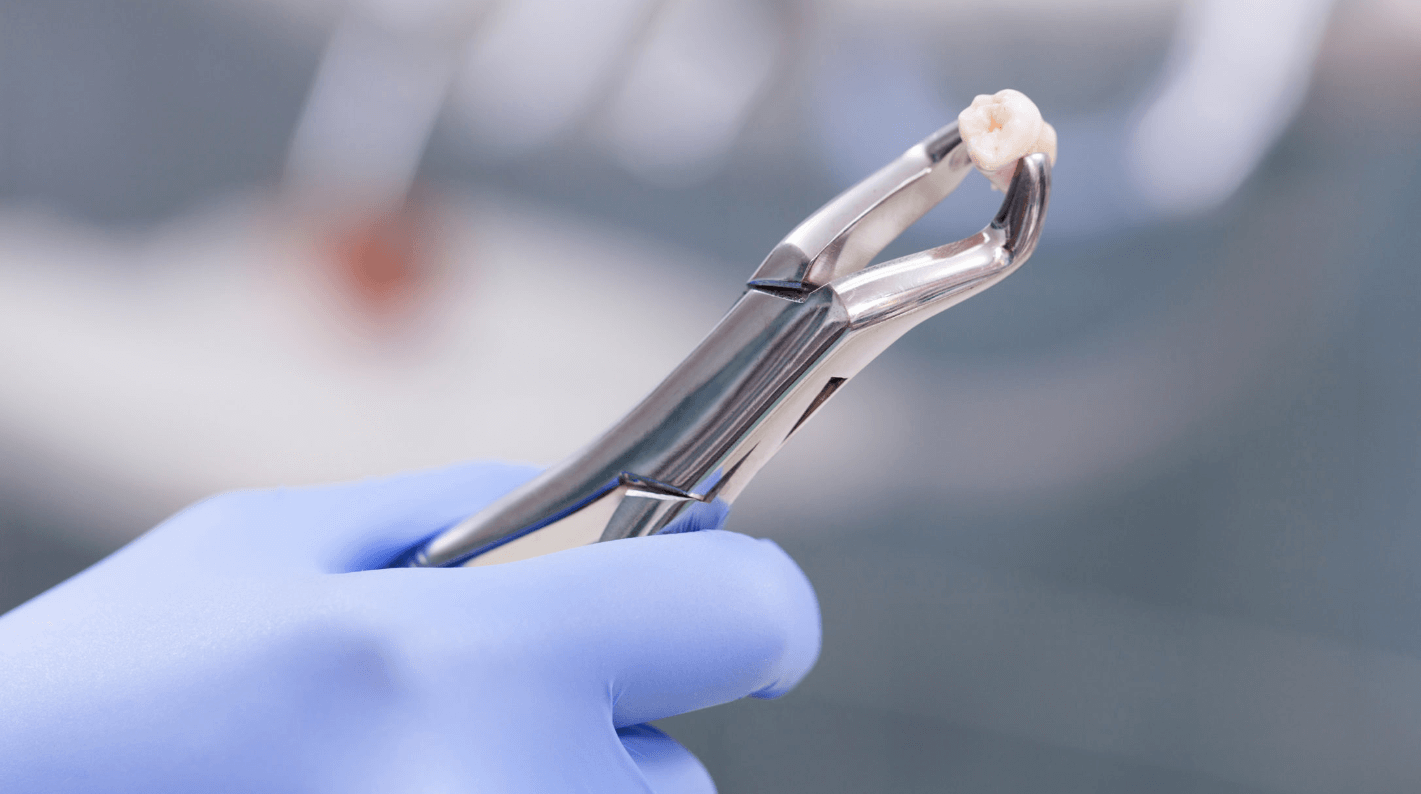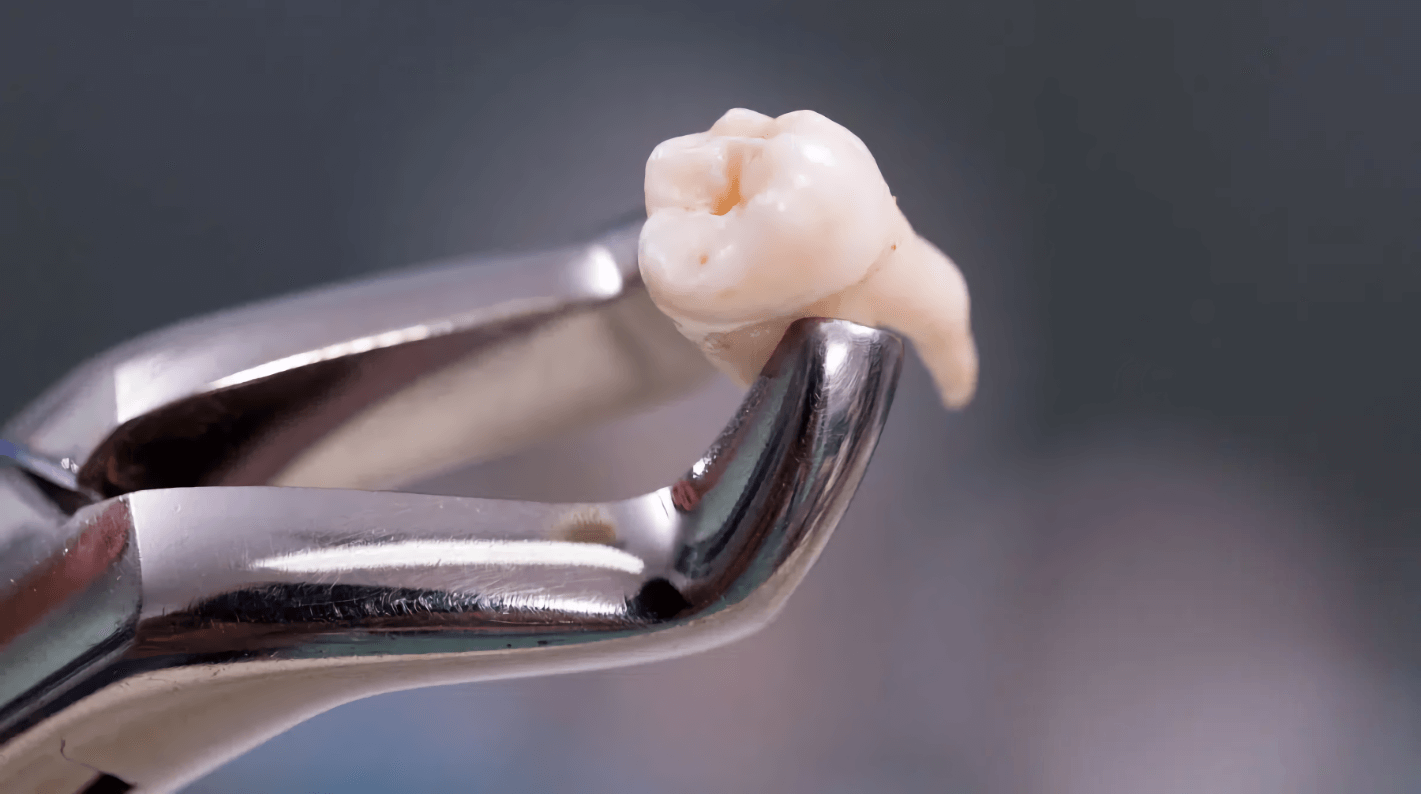Dental forceps are habitual instruments in dental practice, as they are designed for exodontia or the extraction of teeth, a fairly common procedure. There are so many different types of dental forceps that it can sometimes be difficult to clarify the specific functions of each one and which to use in each case. There are forceps for front teeth, canines, premolars, molars; forceps for cordals; upper and lower forceps; forceps for roots or residual radicles, etc. and, if that weren't enough, their names don't always give us clues about their function. But don't worry, because we've come to tell you everything about dental forceps from start to finish. Follow this guide and become an expert!

First and foremost, let's remember that among the indications for tooth extraction are various pathologies, and this is only done when we've exhausted all conservative therapeutic options. Fortunately, many times in cases of caries lesions with pulp involvement or root destruction (root resorption, cemento-dentin lesions, etc.), conservative solutions like endodontics or apical surgery are able to save teeth.
In addition to cavities, which are responsible for approximately 50% of extractions, we can also mention periodontal pathology as another major cause. There are also other reasons, such as prosthetic, aesthetic, orthodontic, eruption anomalies like impacted teeth, radiotherapy treatments in the cervicofacial area, focal infections, traumatic lesions, tumors, cysts, and, unfortunately, situations where conservative treatment is possible, but the patient's socioeconomic conditions do not permit it.
What are dental forceps and how are they designed?
Dental forceps, along with elevators or chisels, are essential instruments for tooth extraction. In this article, we will focus on dental forceps, which operate based on the principle of a second-degree lever and have the function of grasping the tooth and performing a series of impulsion, laterality, and rotation movements that will result in the tooth becoming dislodged due to the breaking of periodontal fibers and alveolar dilation. This dental instrument consists of three parts:
- The tip, bit, beak or bite of the forceps is the active part.
- Intermediate part, usually a joint, which joins the handle to the active part.
- Forceps handle, is the passive part..

Forceps handle: passive part
.It has two parallel branches, rough on the outside to prevent the instrument from slipping. There are forceps without these roughnesses to facilitate cleaning, however, it is better if they have them to facilitate a firm grip and greater control. There are many handle designs for different types of forceps depending on the pieces they are designed for: upper, lower, right, or left.
Forceps tip or bit: active part
.The forceps jaws are designed to adapt to the anatomy of the anatomical crown, but especially to the neck of the teeth for which they are intended, in addition to concave, the inner face of these jaws has grooves to facilitate retention.
Forceps intermediate zone
.This intermediate zone of the forceps determines its purpose of extracting the upper or lower teeth and this is due to the angle that exists between the active (jaws) and passive (handle) parts.
In the case of forceps intended for the extraction of upper parts, the shape of the neck or intermediate zone is:
.
- Anterior teeth: straight
- Premolars and molars: the shank and the bites form an angulation that does not exceed 45º.
For the lower teeth, the angles of the intermediate zone range between 90º and 110º, with the exception of the forceps for lower incisors, which are 45º.
Classification of dental forceps
.There are many types of forceps and with multiple variables, according to the shape of the handle, angulation of the intermediate zone and especially its active part.
Classification of forceps according to the shape of the jaws
.If we take into account the shape of the jaws, we could mention different types of forceps, including:
Un unirradicular forceps: According to the tooth for which they are designed, their jaws can be wider or narrower.
Birradicular forceps: The active part consists of a beak on each side. These instruments are indicated for lower molars and for some previously erupted wisdom teeth.
Tri-radicular forceps: On the palatal side they are similar to those of uniradicular teeth and on the vestibular side they end in a beak or with a bite in the dihedral angle that helps them to adapt to the vestibular root bifurcations of the upper molars. This characteristic makes it necessary to have forceps for both the right and left sides.
Fórceps bayoneta: Es un instrumento creado para la extracción de los restos radiculares. Se llama de bayoneta debido a su forma característica que se asimila a la de un fusil con la bayoneta calada. Su parte activa es larga, curva y afilada. Un ejemplo de este fórceps es el Forceps 51A for upper roots by GNZ Dental.
Fórceps Physick: This instrument is specially designed for uniradicular teeth or fused roots without a posterior tooth stop, sometimes this may be the case for upper and lower wisdom teeth and second molars. Exist Physick right forceps y Physick left forceps .
Trotter and Nevius forceps: We can find several models of this type of forceps and they have in common that their jaws are sharp and bifurcated, to improve the grip of the teeth without crowns.
Classification of forceps according to the type of dentition
.In addition to forceps for permanent dentition, there are also forceps specially designed for temporary dentition, these are approximately 20-40% smaller than the conventional ones.
See forceps for pediatric dentistry from Medicaline
How to choose the forceps to be used on each tooth?
This is the big question. Here are some hints, although you should keep in mind that each patient's anatomy and situation is unique and this will ultimately determine the choice of forceps. Generally speaking, the recommendation is to choose a forceps with jaws that do not touch the crown when the roots are clamped, since, if the crown is used for the application of force, there is a risk of fracture. A forceps with slightly thinner jaws is always better than those that are excessively thick.

Forceps for upper central incisor
.To extract this type of teeth whose characteristic root shape is conical and flattened in the mesiodistal direction, the ideal solution is a straight button to perform the dislocation and a straight forceps for upper incisors. The jaws of this forceps are rectangular and the internal faces are concave, perfect for adapting to the convexity of the vestibular and palatal faces of the tooth. The width of the forceps should be chosen according to the thickness of the neck of the tooth.
Forceps for upper lateral incisor
.Unlike the central incisor, its root is conical and flattened in a mesiodistal sense. For a lateral incisor, you can use a straight elevator and a straight incisor forceps or, if you prefer, a bayonet forceps, since it has finer tips and avoids damaging the central incisor.
 See Forceps No. 1 for upper anterior teeth GNZ
See Forceps No. 1 for upper anterior teeth GNZ
Upper canine forceps
.The canine is a tooth with a solid and large root, slightly flattened in a mesiodistal sense and thicker on the vestibular side than on the palatine side. You can use the same instruments used in the extraction of central and lateral incisors. Although some authors (Berger) suggest that a thick bayonet forceps can also be used to make it easier to adapt to the tooth's neck. Additionally, depending on each case, you could use a upper premolar forceps.

See Forceps Medicaline Upper Incisors and Canines
Forceps for first upper premolar
.The upper first premolar usually has two roots, one vestibular and one palatine, although sometimes it has a single root with bifurcation in the apical third, and very rarely, it has three roots. At the level of the tooth neck, the root section has an ovoid shape with a smaller mesiodistal diameter. For the extraction of this premolar, you can use an upper premolar forceps which is slightly curved in its active part, allowing a correct grip at the neck level, preserving the crown. This forceps has its jaws with concave inner faces to adapt better to the anatomy of the premolar. As in the case of the canine, you can also use a thick bayonet forceps if you prefer, and to facilitate the procedure, you can luxate the tooth using a straight elevator before using the forceps.
Forceps for upper second premolar
.Usually, the upper second premolar has only one root, which is longer and flatter in the mesiodistal direction than the first premolar's root. Exceptionally, this root can be bifurcated. For this premolar, you can use a upper premolar forceps or a thick bayonet forceps if you prefer.

See Forceps N7 upper premolar Bader
Forceps for upper first molar
.The upper first molar has three roots, one palatine and two vestibular, with variable shape and direction. The longest and thickest root is the palatine; the mesiovestibular root is flatter, thinner, and shorter; and the distovestibular root is thinner and flatter than the mesial in the mesiodistal direction. Anomalies of direction and shape are frequent in these roots. To perform the extraction of the upper first molar, a right or left upper molar forceps is used, respectively, which has internal jaws with a grooved shape to adapt to the palatine root and external jaws with a notch that ends in a lance-like point to position itself in the interradicular space of the mesial and distal vestibular roots.
Forceps for upper second molar
.The upper second molar usually has three roots, which are often partially or totally fused. When they are not fused, they are usually separated like in the first molar, that is, two vestibular roots and one palatine root. There is a great variety of morphology in this tooth, both in its root and crown, to the point that sometimes the crown prevents an appropriate grip with the forceps. To extract this tooth, you can use a straight elevator to luxate and then a upper molar forceps. Sometimes the lack of vestibular bifurcation can be an inconvenience for positioning the forceps correctly.

See Forceps N18 upper left molar Bader
Forceps for upper third molar
.The wisdom teeth present diverse anatomical root variations. They can generally have three or even four roots or more. For the extraction of the upper wisdom tooth, a straight elevator, Winter elevator, or Pott elevator is usually used, in addition to upper molar forceps, the same ones used for the first and second molars. There are also upper wisdom tooth forceps with a bayonet shape, and another option is to use a Physick forceps, although it's not the most recommended as it almost always causes the fracture of the maxillary tuberosity, so if you use it, ideally it should only be for luxation and then continue with an upper molar forceps.

See Carl Martin N67A Forceps for upper wisdom teeth
Central and lower lateral incisor forceps
.The lower central and lateral incisors have fine and long roots, flat in the mesiodistal sense. To extract these teeth, a lower incisor forceps is necessary, which has an active part at a 90º angle and fine beaks that easily adapt to the root anatomy. Unlike other forceps, their inner faces are not concave, but parallel.
Lower canine forceps
.Lower canines, in cross-section, have a triangular shape, with a conical root that is shorter mesiodistally than vestibulo-lingually. This root is very solid and compact, and sometimes the apex is bifurcated. For their exodontia, a lower canine forceps is used, which forms an obtuse angle of approximately 110º with its active part and the handle. This forceps has wide beaks, as a robust root requires the application of significant force.
Forceps for lower first premolar
.This first bicuspid has a single long and flat root in the mesiodistal direction. It also has a very weak neck, making it a fragile tooth. For its extraction, a lower canine forceps or a lower premolar forceps can be used, especially when the crown is relatively intact.
Lower second premolar forceps
.Its root is larger than that of the first lower premolar, but despite this, they are very similar, so the same instruments can be used: lower canine forceps or lower premolar forceps.

See N13 Forceps for lower incisors and lower premolars GNZ
Lower first molar forceps
.The lower first molar has two roots, one anterior or mesial in conical shape and one posterior or distal that is usually longer. According to Black, the bifurcation of these roots is closer to the crown than in any other tooth. Both roots, additionally, tend to present anomalies such as curvature, direction deviations, and hypercementosis. It is very important to perform a radiographic examination to know these root dispositions and anomalies, as well as the degree of bone calcification, trabeculation, and alveolar architecture. When a traditional exodontia (without odontosection or surgical extraction with alveolectomy) is possible, three types of forceps can be used:
- Forceps for lower molars with lateral grasp: Also called the parrot-beak forceps, this instrument has its active and passive parts forming a right angle, and its bites adapt to the dental neck. This forceps can be used indistinctly on the right or left side, as its two branches are identical.
- Forceps for lower molars with frontal grasp: It is another type of parrot-beak forceps, its tips are similar to those of the lateral grasp forceps, but its difference is that the passive part and the handle are parallel to the dental arch. It is preferable to use this forceps when the patient has trismus or limited mouth opening. It is always better to use a lateral grasp forceps, because with the frontal grasp forceps, the extraction forces are displaced.
- Forceps for lower molars with lateral grasp and pointed or rounded active parts: These adapt to the bifurcation of the roots and, when the forceps is closed in the bifurcation area, the roots lift the tooth. It is essential that if this forceps is used, the tips are well positioned, as otherwise, the alveolar bone could be damaged or damage could be caused to adjacent teeth.
Lower second molar forceps
.Lower second molars are biradicular teeth and their arrangement is similar to that of the first molar, but their roots are usually smaller, straight, conical, convergent and may be fused. The same extraction instruments can be used as for the lower first molar.

See Bader Lower Molar Forceps N22
Fórceps para tercer molar inferior
Esta pieza es la que más variedades de forma, tamaño, disposición y anomalías presenta. Habitualmente tiene dos raíces, aunque puede tener tres, cuatro o cinco. También sus raíces pueden ser fusionadas y cónicas. Cuando este cordal está erupcionado, sus características son similares a las de otros molares inferiores. Si no fuera por su ubicación tan posterior, podría utilizarse un fórceps de presa lateral, pero resulta más cómodo y conveniente utilizar un botador recto o botador de Pott, además de un fórceps de molar inferior con presa anterior o frontal.
La mayoría de los autores consideran que la extracción del tercer molar inferior es una de las más difíciles y con mayor propensión a tener complicaciones como lesión de las piezas adyacentes o fractura mandibular.

See Bader N79 Forceps for lower wisdom teeth
Forceps for Root Remnant Extraction
Root remnant extraction is a common practice. Root remnants exist as a consequence of advanced caries that has been able to completely destroy the crown, leaving the roots submerged in the gum to a greater or lesser extent. Root remnants can also be a consequence of incomplete extractions or fractured roots. The forceps used in these cases are of two types:
- Forceps for extracting root remnants from the upper jaw: These instruments have a bayonet shape to adapt to the neck of all roots in the upper jaw, especially those in posterior sectors.
- Forceps for extracting root remnants from the lower jaw: The active and passive parts of these forceps form a right angle, and their bites are fine and relatively pointed to facilitate adaptation to dental necks. This procedure can also be performed with lower incisor forceps.
As you've seen, the choice of forceps varies from patient to patient due to their specific anatomy and clinical condition, but we hope to have given you ideas to guide you in selecting the correct instrument. Now, it will be easier for you to find what you need at Dentaltix, where we have a wide variety of dental forceps and other instruments specifically designed for dental surgery.
See all forceps for dental surgery
If you found it interesting or you want to leave us any opinion or question, do not hesitate to contact us through our email, phone and social networks, we will be happy to help you. See you next time!


